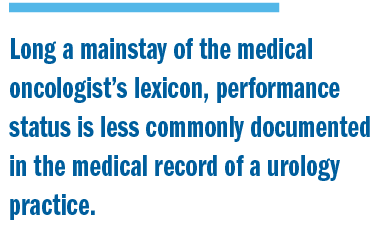Article
mCRPC advances come with choices, challenges
In this article, Robert A. Dowling, MD, examines some of the practice-related implications of the rapid change in the management of patients with advanced prostate cancer.
The last 5 years have seen dramatic changes in the choices available to urologists for treatment of advanced prostate cancer.

Robert A. Dowling, MDPatients with this problem have been traditionally treated in a urology practice with a combination of injectable gonadotropin-releasing hormone agonists/antagonists and oral antiandrogens until they progressed-and then, if their performance status permitted, they were referred to a medical oncologist for consideration of cytotoxic chemotherapy. The FDA approval of immunotherapy (sipuleucil-T [Provenge]) in 2010, denosumab (XGEVA) in 2010, abiraterone acetate (ZYTIGA) in 2011, enzalutamide (XTANDI) in 2012, and radionuclide therapy (radium-223 [XOFIGO]) in 2013 has changed the treatment landscape for these patients and the urologists who manage them.
In this article, I examine some of the practice-related implications of this rapid change in the management of patients with advanced prostate cancer.
Knowledge of guidelines important
The AUA first published its guidelines on castration-resistant prostate cancer in May 2013, and classified the recommendations based upon a matrix of metastatic status, symptoms, performance status, and prior chemotherapy with docetaxel (Taxotere). Grouping patients into categories (index patients), the guidelines offer therapy options based on these criteria and some evidence-based clarification of the decision-making process.

READ: Glypican-1 shows promise as prostate cancer biomarker
The National Comprehensive Cancer Network (NCCN) guidelines on advanced prostate cancer closely mirror the AUA guidelines. Urologists may wish to familiarize themselves with NCCN guidelines, as they are more detailed and used by medical oncologists. Patients do not always progress in an orderly fashion through identifiable categories, but the guidelines offer an important framework for thinking about castration-resistant disease.
NEXT: Candidate identification
Candidate identification
The decision-making process and complexity of managing these patients highlights the importance of identifying patients who are progressing based on clinical data like PSA kinetics and carefully documenting performance status and symptoms. While there are many tools available to measure performance status, the two most commonly used to assess functional status are the Karnofsky performance status and the Eastern Cooperative Oncology Group scales.
Read: ICD-10: Different codes but identical guidelines
Long a mainstay of the medical oncologist’s lexicon, performance status is less commonly documented in the medical record of a urology practice. Commercial electronic health record systems may not include a convenient way to capture this information in a structured manner. The documentation of symptoms due to bony or visceral metastatic disease may be even more problematic. Finally, the new array of therapeutic choices available to the urologist may introduce a new and lower threshold for ordering diagnostic studies to assess metastatic disease and bone health.
Urologists who have been entering “data” into their EHR system are now beginning to ask whether the information can be “mined” for various purposes, including identifying gaps in care (vis a vis guidelines) or looking across a large practice for opportunities to offer patients one of these newer therapies. Clearly, this capability will depend in part on the quality and quantity of documentation, including symptoms, performance status, and metastatic status.
NEXT: Revenue opportunities
Revenue opportunities

More choices for urologists and their patients may mean a healthier bottom line for the practice. In addition to preventive therapies like denosumab that can easily be offered in a urology office, practices are now offering infusion centers (sipuleucil-T), comprehensive bone health programs (including bone mass density measurement), in-office dispensing (oral agents), or even comprehensive cancer centers that include chemotherapy administration. Some of these therapies are expensive, but still profitable in a well-managed practice.
The next generation of prostate cancer care will probably include an active population health (proactive) management paradigm instead of the current office visit-based care. Practices will need to be able to identify patients who have gaps in care, or are new candidates for targeted care, outside of the exam room and in a model that depends on reliable clinical documentation, measurement, clinical analytics, and quality improvement.
Also see: How to prevent medication errors in your practice
Bottom line: There are more opportunities for urologists to continue to manage even the most advanced prostate cancer patients in their practice, but they are accompanied by needs for increased attention to familiarity with complex guidelines, improved clinical documentation, and the costs of care
You might also like
Compliance with PCa quality measures not tied to outcomes
Biomarkers yet to fully justify claimed clinical utility
Is billing for stone prevention counseling possible?
Subscribe to Urology Times to get monthly news from the leading news source for urologists.

















